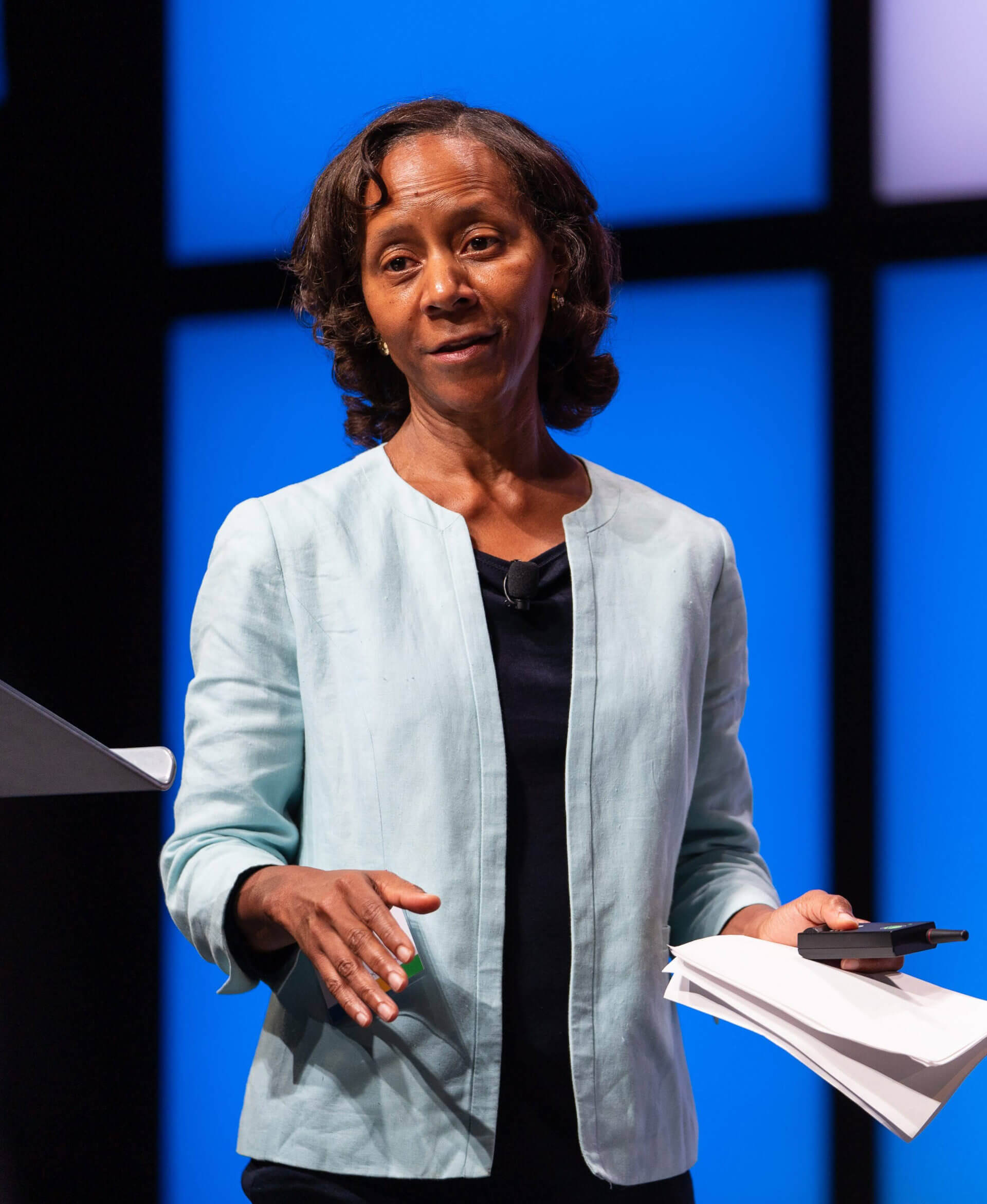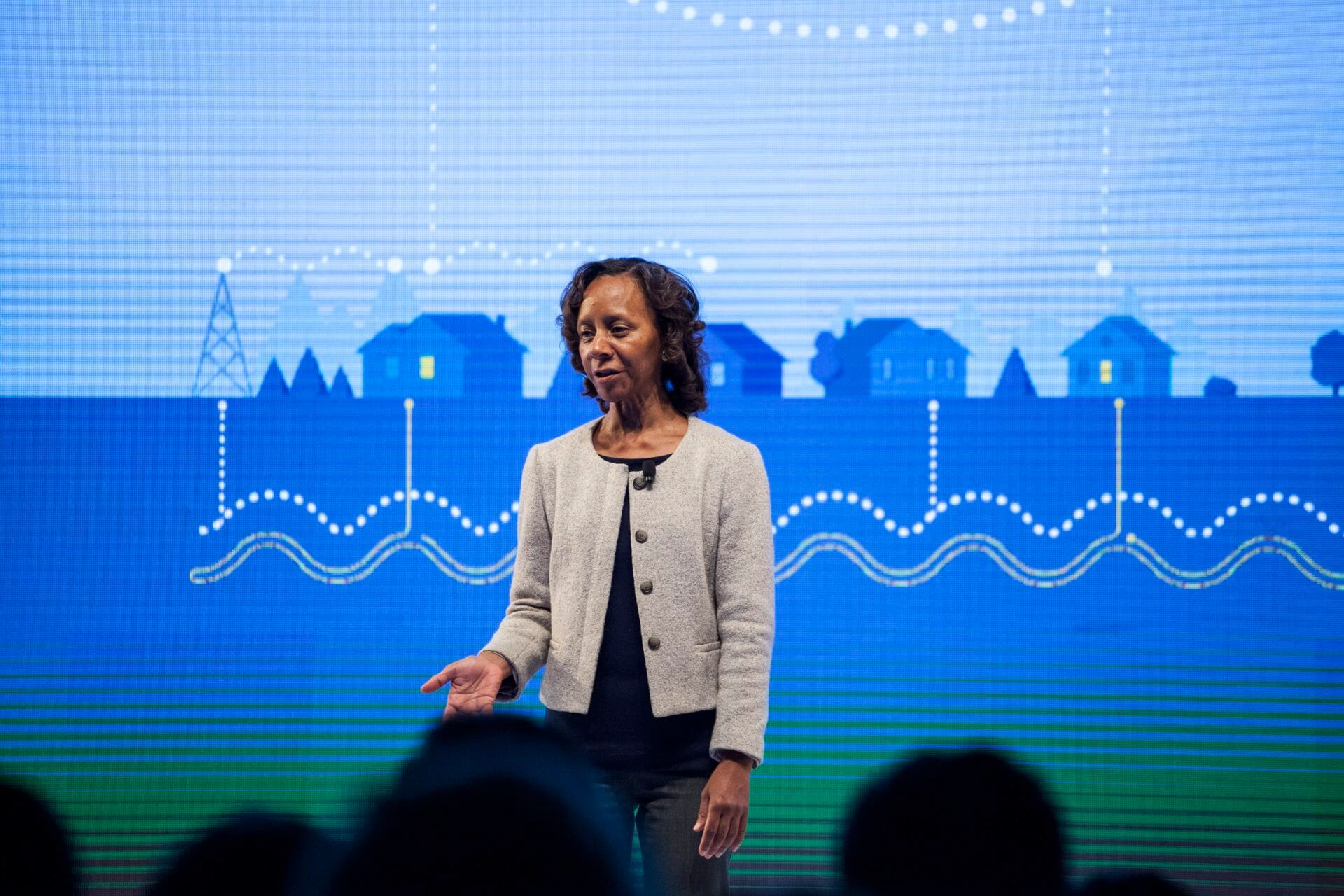Sending Your Voice Over the Internet? Some Called It a Toy. Not Marian Croak.

As a girl, Marian Croak was fascinated whenever a plumber or an electrician came to her house, following them around and watching these ingenious strangers pulling apart pipes and wires and weaving their magic to make things work again.
“I love trying to understand how things work,” said Croak, who completed her doctoral studies in statistical analysis and social psychology at USC in 1982. “I actually thought I would become a plumber.”
But Croak didn’t become a plumber. She took her passion for solving problems so much further than that. Croak is now vice president of engineering at Google, following a long career at Bell Laboratories and AT&T. She is a key mind behind one of the modern world’s most ubiquitous technologies, Voice over Internet Protocol (VoIP), which converts voice into a digital signal that can be transmitted over the internet. In our current reality of remote work and audio and videoconferencing, many of us would be utterly lost without VoIP.
Croak, a member of USC Viterbi’s corporate advisory board, holds more than 200 patents relating to VoIP.
Growing up in New York City, she developed her fascination for STEM with the help of some supportive teachers at her local public school.
“The teachers were just phenomenal. I remember having a chemistry teacher who was a woman and she just inspired me so much,” she said.
Her father encouraged this passion, building his daughter her own chemistry set to experiment with.
After attending Princeton University, Croak moved to California and USC to study statistical analysis and social psychology, a unique combination of disciplines that would fortify her fascination with how technology can be shaped to offer a positive impact on human lives.
“I received great mentoring at USC and also appreciated the USC culture, with its large international body of students,” Croak said. “It was an ideal college environment. I think that gaining the understanding of how social groups work together has really helped inform a lot of the engineering that I do.”
Croak caught the attention of a recruiter from Bell Laboratories (later AT&T Bell Laboratories) at a USC career fair in 1982, which helped her secure a graduate role in their Human Factors research division. From there, Croak furthered her study in network engineering and began to forge a career in what at the time was a very male-dominated area.
“But somehow, throughout my life, I didn’t really notice that too much,” she said, “because my personality was very similar to the engineers that I worked with. I’m kind of quiet and introspective, and I’d rather read a book than go to a party. So, independent of the fact that they were male — and yes, mostly white males — I felt like I fit in with them.”
However, Croak’s quiet and introspective personality didn’t stop her from speaking out and taking risks. She recalls a difficult meeting when she was still a young engineer at AT&T Bell Labs, where she highlighted a problem with different divisions of the company that were not communicating with each other. Her honesty did not go down well with the other engineers in the room, and as the meeting came to a tense conclusion, the vice president approached her. She felt immediate dread.
“I thought, Here it goes! But he said, ‘I’m so glad you’re here and you’re willing to share your insights and be honest,’” Croak recalled. “And from that moment on, I was empowered to have a voice.”
In the dawning days of the internet, Croak saw important opportunity that was being ignored: digital telecommunications. She and her AT&T team were working on internet protocol technology: They could see how inefficient it was for their company to run its existing voice network for phone communication alongside the new digital network for internet traffic. Why couldn’t you use the internet for both?
“It was before the advent of the web browser, which really helped to change things, but the internet was starting to be an interesting technology,” Croak said. “And so we tried experimenting with packetizing voice and treating it just like it was data and running it over an IP connection, and it worked.”
Croak knew that if AT&T didn’t prioritize converting its voice network to a VoIP system, one of its competitors would do so first, and AT&T would be left behind. But she met strong resistance from people who felt the internet was a “toy” and would go away, and that the technology didn’t have the same quality or scalability as the voice network.
“We got it so that it was fairly easy to adapt internet protocol to carry voice traffic,” she explained. “And finally, after a lot of trying, people started listening to me, and they said go for it! Suddenly, everything shifted, and the very people that had argued against it started working in my organization.”

VoIP technology was a game-changer, and especially with the global pandemic, it is now a crucial part of our world, enabling people to work from home while still remaining in close contact with colleagues.
“I always had a sense that this was where it was going to go. It was a very exciting experience and something that I’ll be forever grateful for,” Croak said.
If spearheading the technology that reimagined modern communications wasn’t enough, Croak saw another opportunity to create positive change. The inspiration came from an unlikely place: “American Idol.” AT&T started working with the wildly popular TV show after viewers created major network issues while voting simultaneously for their favorite contestants. Croak and her team devised a text-to-vote system, meaning the huge influx of votes could be moved away from the core network.
Around the same time, Hurricane Katrina devastated New Orleans, and Croak put her problem-solving skills to good use to help raise money for its many victims.
“It was so distressing to see what was happening and to know that people needed help, and they needed immediate help,” Croak said. “I thought that a very quick way of being able to get donations to people could be by using a text application similar to what we had done with ‘American Idol.’”
Croak and her team adapted the application into a text-to-donate system and made the patent freely available so that charitable organizations could adopt it. The Red Cross implemented it quickly and the impact was immediate, leading to the organization’s largest response effort ever.
In 2014, Croak joined Google, where she leads the reliability engineering team, ensuring that Google and YouTube systems function without failure.
She has also worked on Project Loon, Google’s network of balloons that extends internet access to disaster areas and parts of the world where the internet is not available. Croak led the team that brought broadband technology to many developing countries, as well, which she said was a thrilling experience.
“We built fiber networks in Africa. We brought Wi-Fi into Indian railroad stations, and it was probably the first very big deployment of Wi-Fi in India,” Croak said.
Croak also plays a key role in racial justice initiatives at the tech giant, such as training and accountability for staff and managers, recruitment initiatives, outreach and support for minority-owned small business and nonprofit organizations, and many more.
Most of all, Croak loves her special team of collaborators at Google.
“They’re bright, they’re dedicated, and they want to change the world. It has been a real joy to work with them,” Croak said.



